If your organic traffic has dropped 20% or more in the last 6 months, you're not alone. Google's AI integration has fundamentally changed how search works, affecting 73% of all commercial queries.
Those AI-generated summaries dominating search results? They're called AI Overviews, and Ahrefs reports they now appear in 29% of searches—reducing clicks to traditional results by up to 34.5%. This isn't a temporary experiment. It's a permanent shift in how information is delivered online.
The instinct might be to fight these changes or find ways around them. But that's the wrong approach. The businesses thriving right now aren't trying to beat AI—they're adapting their strategies to work with it. This guide reveals exactly how to make that pivot, starting with understanding what's really happening in search and then building a strategy that turns these challenges into competitive advantages.
TLDR:
- Zero-click searches now account for 60% of all Google searches, fundamentally changing traffic patterns
- The gap between AI-adapted businesses and traditional SEO practitioners is widening rapidly
- The Helpful Content Update has permanently altered how Google evaluates website quality
- Traditional keyword rankings no longer guarantee traffic or revenue
- Google's AI Mode represents a complete reimagining of search, not just an incremental update
- Early adopters of AI-optimized SEO strategies are gaining significant market share
- Your SEO strategy 2025 must evolve from keyword-focused to entity and intent-driven
The New Search Landscape: Understanding AI's Transformation
For over 15 years, our team at Roketto has guided businesses through every major shift in digital marketing. We've weathered Panda, Penguin, and countless core updates. But the current integration of AI in SEO represents something fundamentally different—a complete reimagining of how search engines deliver information and how users interact with search results.
This insider's guide isn't another "SEO is dead" proclamation. Instead, it's a strategic analysis of how AI search optimization is reshaping the digital landscape and what it means for your business growth. The future of SEO is here, and it requires new strategies, metrics, and mindsets.
AI Overviews and AI Mode: The End of Traditional SERPs
Google's AI-powered search experience has evolved rapidly. AI Overviews (AIOs)—those AI-generated responses now dominating search results—evolved from Google's Search Generative Experience (SGE), officially launching in the US in May 2024 before rolling out globally.
The latest development, AI Mode (launched May 2025), represents what Google CEO Sundar Pichai calls a "total reimagining of Search." This immersive AI search experience addresses complex, multi-faceted queries directly, featuring:
- Deep Search capabilities for comprehensive research reports
- Agentic features for task completion, like bookings and reservations
- Multi-modal understanding combining text, images, and video
Key Insight: The traditional "ten blue links" SERP is rapidly becoming obsolete for many query types, fundamentally changing how users discover and interact with business websites.
The Numbers Don't Lie: Quantifying AI's Impact on Traffic

Recent studies reveal the stark reality of how AI in SEO is affecting organic visibility:
Click-Through Rate Devastation:
- Ahrefs (April 2025): 34.5% CTR drop for Position 1 when AIOs present
- Amsive (April 2025): 15.49% average CTR decline across all queries
- Non-branded keywords: Nearly 20% CTR reduction
- Mobile impact: 33% decrease in clicks to websites
- Desktop impact: 50% reduction in click-through rates
The Silver Lining: Branded queries triggering AIOs saw an 18.68% CTR increase, highlighting the critical importance of brand building in your SEO strategy 2025.
Industry-Specific Impact Analysis:

(Same table as in the graphic above:)
|
Industry |
Average Traffic Loss |
Most Affected Query Types |
Recovery Potential |
|
SaaS |
-28% |
Feature comparisons, tutorials |
High (with strategy pivot) |
|
E-commerce |
-19% |
Product information, reviews |
Moderate |
|
Publishing |
-42% |
News, informational content |
Low |
|
B2B Services |
-23% |
Educational content, guides |
Moderate |
The Helpful Content Update: Why Recovery May Be Impossible
Understanding HCU as a Site-Wide Classifier
The Helpful Content Update, integrated into Google's core algorithm in March 2024, operates as a site-wide quality classifier rather than a page-level evaluator. This fundamental misunderstanding has led many businesses down fruitless recovery paths.
What HCU Actually Evaluates:
- Overall domain authority and topical focus
- Consistency of E-E-A-T signals across all content
- User engagement patterns site-wide
- Backlink profile health and natural link velocity
- Technical performance and Core Web Vitals
- Content-to-ad ratio and user experience signals
Case Studies: Lessons from the Fallen
DMARGE Publishing: Despite investing in extensive content improvements and technical optimization, this lifestyle publisher experienced a 95% traffic loss that did not recover after 18 months.
Key Learning: HCU recovery isn't about fixing individual pages,it's about transforming the fundamental business model and content strategy.
Charleston Crafted Insights: At a late 2024 Google Web Creator Summit, representatives reportedly indicated that many HCU-affected sites "will never recover," confirming what many SEO professionals suspected.
Quick Win: If your site has been HCU-affected, focus resources on building a new, authoritative property rather than attempting to recover the existing domain.

The Publisher's Dilemma: When Opting Out Means Disappearing
Google's use of publisher content for AI-generated answers creates an impossible choice: allow your content to be used without compensation or opt out entirely and lose all organic visibility.
Current Options and Their Limitations:
- robots.txt: Controls crawling but not AI usage
- nosnippet tags: Limits preview text but doesn't prevent AI extraction
- Google-Extended: Blocks some AI training but not AI Overviews (Google's Developer Documentation on Crawlers)
- Complete opt-out: Requires blocking Googlebot entirely = search invisibility
Rather than fighting this reality, forward-thinking businesses are adapting their content strategy for AI search to maximize citation value and brand mentions within AI responses.
Your SEO Strategy 2025: Seven Pillars of AI-Era Success

Pillar 1: H.E.E.A.T. Implementation Framework
Helpfulness, Experience, Expertise, Authoritativeness, and Trustworthiness are no longer optional; they're survival requirements. Here's how to leverage AI in SEO through H.E.E.A.T:
Implementation Checklist:
- Author pages with verifiable credentials and social proof
- Case studies demonstrating real-world application
- Video content showing the product/service in action
- Third-party reviews and testimonials are prominently displayed
- Clear "About Us" with company history and leadership
- Security badges and industry certifications
- Regular content updates showing current expertise
Through systematic H.E.E.A.T. implementation, we helped out client, Ringy build a strong topical authority in the CRM space, earning consistent visibility in competitive search results and expanding from 100 to over 15,000 monthly organic visits.
Pillar 2: From Keywords to Entities and Intent Clusters
The future of SEO requires thinking beyond individual keywords to comprehensive topic coverage and entity relationships.
Entity Optimization Framework:
- Define Core Entities: Your brand, products, and key personnel
- Map Entity Relationships: Connections between your entities and industry concepts
- Build Entity Authority:
- Wikipedia presence (where applicable)
- Knowledge Graph optimization
- Structured data implementation (Schema.org)
- Consistent NAP across platforms
Content Cluster Strategy:
- Hub Content: Comprehensive guides addressing broad topics
- Spoke Content: Detailed articles on specific subtopics
- Intent Bridges: Content connecting different user journey stages
Pillar 3: Zero-Click Value Capture
With as many as 60% of searches now resulting in zero clicks, capturing value without clicks becomes crucial.
Zero-Click Optimization Tactics:
- Featured Snippet Optimization:
- Answer target questions in 40-60 words
- Use structured formats (lists, tables)
- Include "is" statements for definitions
- AIO Citation Strategy:
- Create authoritative, citable statistics
- Develop unique research and data
- Use clear, declarative statements
- Implement proper schema markup
- Brand Mention Monitoring:
- Track brand appearances in AI responses
- Monitor sentiment and accuracy
- Build relationships for correction requests
Our Integricare case study showed that while direct clicks decreased 15%, brand searches increased 45% after implementing zero-click optimization.
Pillar 4: Bottom-of-Funnel Domination
While AI handles informational queries effectively, transactional and commercial investigation queries remain human-driven.
High-Intent Optimization Strategy:
- Comparison Pages: "[Your Product] vs [Competitor]" with detailed feature matrices
- Pricing Transparency: Clear, comprehensive pricing information
- Use Case Pages: Industry and role-specific applications
- ROI Calculators: Interactive tools demonstrating value
- Implementation Guides: Detailed onboarding content
E-commerce Specific Tactics:
- Real-time inventory display
- Detailed product specifications
- User-generated content integration
- Advanced filtering options
- Local availability indicators
Pillar 5: Technical SEO for AI Crawlers
AI systems require different technical considerations than traditional search crawlers.
AI-First Technical Checklist:
- Clean, semantic HTML structure
- Comprehensive schema markup implementation
- JSON-LD for complex relationships
- Fast server response times (<200ms)
- Static HTML rendering for critical content
- Proper heading hierarchy (single H1, logical H2-H6 flow)
- Image optimization with descriptive alt text
- XML sitemaps including priority and change frequency
Crawler Management Strategy:
User-agent: GPTBot
Allow: /
User-agent: Claude-Web
Allow: /
User-agent: PerplexityBot
Allow: /
User-agent: Google-Extended
Allow: /
Pillar 6: Diversified Traffic Architecture
Building resilience against search volatility requires a multi-channel presence.

Channel Diversification Matrix (same table as in graphic above):
|
Channel |
Investment Priority |
Expected ROI Timeline |
Risk Level |
|
Organic Search |
High |
6-12 months |
High |
|
Paid Search |
High |
Immediate |
Low |
|
Email Marketing |
High |
3-6 months |
Very Low |
|
Social Media |
Medium |
6-9 months |
Medium |
|
Direct Traffic |
High |
12-18 months |
Very Low |
|
Referral |
Medium |
6-12 months |
Low |
Brand Building Initiatives:
- Podcast sponsorships in your industry
- Thought leadership content distribution
- Strategic partnership development
- Community building and engagement
- Offline-to-online campaign integration
Pillar 7: AI-Era Metrics and Reporting
Traditional rankings and traffic metrics no longer tell the complete story.
Modern SEO KPIs:
- Revenue per Organic Session (not just traffic volume)
- Share of Voice in AI Overviews (brand mention frequency)
- Entity Authority Score (Knowledge Graph presence)
- Content Efficiency Rate (conversions per piece of content)
- Brand Search Velocity (month-over-month brand search growth)
- Assisted Conversion Value (multi-touch attribution)
- Engagement Quality Score (time on site × pages per session × return rate)
Industry-Specific Strategies
SaaS Companies: Leveraging Technical Authority
SaaS businesses face unique challenges with AI search optimization, but also unique opportunities:
Competitive Advantages:
- Technical content depth AI systems prefer
- Natural software demonstration opportunities
- Strong user communities for authentic reviews
- Integration ecosystems building entity relationships
SaaS-Specific Tactics:
- Interactive product demos embedded in content
- API documentation optimized for developer searches
- Integration guides for popular tech stacks
- Community-generated content from power users
- Changelog SEO for feature update visibility
Our SaaS clients leveraging these strategies have seen average organic lead quality improve by 67% despite traffic decreases.
E-commerce: Protecting Transactional Traffic
The e-commerce industry faces different AI search challenges, particularly around product information queries.
E-commerce Protection Strategies:
- Enhanced Product Information Architecture
- Comprehensive specifications
- Multiple high-quality images
- Video demonstrations
- AR/VR try-on features
- User-Generated Content Integration
- Review summaries in schema
- Q&A sections on product pages
- Customer photos and videos
- Size and fit feedback
- Local SEO Integration
- Store inventory connectivity
- Local pickup options
- Regional pricing display
- Geo-targeted landing pages
Making the Transition: Your 90-Day AI-SEO Action Plan

Days 1-30: Assessment and Foundation
Week 1-2: Comprehensive Audit
- Analyze current traffic patterns and AI Overview impact
- Identify content affected by HCU or core updates
- Evaluate E-E-A-T signals across your domain
- Assess entity presence and Knowledge Graph status
Week 3-4: Strategic Planning
- Develop entity optimization roadmap
- Create content cluster architecture
- Define new KPIs and reporting structure
- Allocate resources across channels
Days 31-60: Implementation Phase
Week 5-6: Technical Optimization
- Implement comprehensive schema markup
- Optimize for AI crawler accessibility
- Improve Core Web Vitals scores
- Set up proper tracking and measurement
Week 7-8: Content Transformation
- Launch H.E.E.A.T.-focused content updates
- Create bottom-of-funnel comparison content
- Develop zero-click optimized resources
- Build topical authority clusters
Days 61-90: Acceleration and Measurement
Week 9-10: Multi-Channel Activation
- Launch paid search campaigns for gap coverage
- Implement email capture optimization
- Begin brand building initiatives
- Activate social media presence
Week 11-12: Analysis and Iteration
- Measure performance against new KPIs
- Identify quick wins and scale
- Adjust strategy based on data
- Plan the next 90-day sprint
The Competitive Advantage of Early Adoption
Businesses adapting quickly to AI search optimization are seeing remarkable results:
- 43% higher conversion rates from AI-optimized content
- 67% improvement in lead quality despite lower traffic volumes
- 3.2x increase in brand searches within 6 months
- 52% lower customer acquisition costs through better targeting
While competitors chase traditional rankings, forward-thinking businesses are building sustainable advantages through entity authority and intent optimization.

The Roketto Advantage: Proven Results in the AI Era
As the search landscape transforms, having the right partner becomes crucial. At Roketto, we're not just observing these changes—we're actively pioneering strategies that deliver results.
How We're Helping Clients Succeed:
For SaaS Companies:
- Ringy CRM, a SaaS company, achieved 150x organic growth through an AI-optimized content strategy
- Consistent AI Overview citations for industry terms
- 480+ pages of authority-building content
- Reduced CAC by 61% through quality traffic focus
For E-commerce Brands:
- Integricare, a pet supplement e-commerce and retail brand, saw a 78% revenue increase despite algorithm changes
- Protected transactional traffic through enhanced product content
- Built sustainable brand authority in the pet health niche
- Achieved top AI Overview positions for commercial queries
Our AI-Era Service Evolution:
HyperContent Updates: Our flagship content service now includes:
- AI Overview optimization
- Entity relationship mapping
- Zero-click value strategies
- Intent cluster development
- AI Brand mention tracking & reporting
Technical SEO Upgrades: Enhanced technical services featuring:
- AI crawler optimization
- Advanced schema implementation
- Core Web Vitals monitoring and fix improvements
- Multi-channel tracking expansion
Strategic Flex Hours: Agile support for rapid market adaptation:
- Quick responses to algorithm changes
- Competitive intelligence monitoring
- Continuous optimization cycles
- Cross-channel integration support
The Future of SEO is Already Here
The question isn't "Will SEO be replaced by AI?" but rather "How quickly can you adapt your SEO strategy for the AI era?" The businesses thriving today aren't those clinging to old tactics—they're the ones embracing change and building resilient, multi-faceted digital strategies.
Is SEO worth it in 2025? Absolutely,but only if you're willing to evolve beyond traditional approaches. The future of SEO lies in understanding that search engine optimization now means optimizing for AI systems, user intent, and brand authority simultaneously.
The seismic shift is real, and the challenges are significant. But for businesses ready to adapt, the opportunities for competitive advantage have never been greater.
Ready to Navigate the AI Search Revolution?
The transformation of search through AI presents both challenges and opportunities. Whether you're seeing traffic declines, struggling with algorithm updates, or simply want to stay ahead of the curve, having the right strategic partner makes all the difference.
At Roketto, we're actively helping businesses adapt to these changes through:
- Strategic Assessment: Understanding your current position and opportunities in the AI-driven search landscape
- Custom Solutions: Tailored strategies based on your industry, competition, and business goals
- Proven Expertise: Nearly 15 years of experience navigating search evolution
- Integrated Approach: Combining SEO, content, technical optimization, and multi-channel strategies
Give us a shout to discuss how we can help your business thrive in the new search landscape.

Ulf Lonegren
Ulf Lonegren is CEO and Co-Founder of Roketto, where he has led digital marketing strategy for over 15 years. With extensive experience in both traditional SEO and emerging AI search optimization, Ulf has guided hundreds of SaaS and ecommerce companies through major search algorithm updates and platform shifts. His expertise spans from the early days of Google's algorithm changes through the current AI revolution, giving him unique insight into what actually drives sustainable search visibility. Ulf's approach focuses on fundamental optimization principles that adapt to new technologies rather than chasing trending acronyms, a philosophy that has helped Roketto's clients achieve measurable growth across multiple search paradigm shifts.











2.png)
2.png)









